Content ROI: How to Increase Blog Content Conversions 


You’ve already heard time and time again that content marketing is an essential part of search engine optimisation (SEO). But what if you could transform it into so much more?
We’re talking about turning your blog into a lean, mean conversion machine.
See, it’s one thing to start a blog and bring in visitors to your site.
It’s another thing entirely to use that content as rocket fuel to rack up more leads and sales.
And if you’re really serious about maximising conversions throughout your website, you need to do the latter.
So how can you turn clicks into customers, and traffic into transactions?
In this post, we’ll take you through 9 tips to increase the number of conversions coming through your blog. You’ll learn how to discover CRO opportunities using real data from your website, as well as the most effective tactics out there today to drive business forward.
Let’s get started.
Is it possible to convert customers with a blog post?
In a nutshell, absolutely.
Done well, your blogs will get your audience to engage with your brand, learn more about your offering, and eventually turn to you when they need your product or service. It’s why more than 60% of marketers say blog development is their top inbound marketing priority and, conversely, why 6 out of 10 consumers say that blog posts are valuable in the early stages of the buying process.
However, that doesn’t mean that getting conversions from your blog is easy. In fact, it’s quite the opposite.
Time and time again, business owners and marketers find themselves creating high-quality content that drives plenty of website traffic each month, but has a high bounce rate and a low conversion rate.
This is SO common that a huge chunk of people who start blogs quit in just 3 months.
The difference between those who succeed and those who don’t?
It’s conversion optimisation.
Conversion rate optimisation is a powerful tool to help you understand which parts of your blog are working for your customers, and where there’s room to improve. When you use the data to guide your decision-making, you can tailor your content to what’s working for your audience — and ultimately get more subscribers, shares, leads, and customers.
How to discover blog post conversion optimisation opportunities with data
Before you can get to work optimising your blog posts, you have to uncover where the opportunities lie. This will help you prioritise your efforts on the pieces of content that will give you the most bang for buck when they’re optimised.
For example, focusing your efforts on a high traffic page with a high bounce rate and low conversion rate will yield much better results than focusing on optimising blog posts with low traffic volumes.
So how do you find these posts? You can either:
- Look at the bounce rate of your posts compared to the site average, or
- Look at the post conversion rate compared to the site average.
Let’s start with the first one: bounce rate.
Hop into Google Analytics, then click the “Comparison” feature:
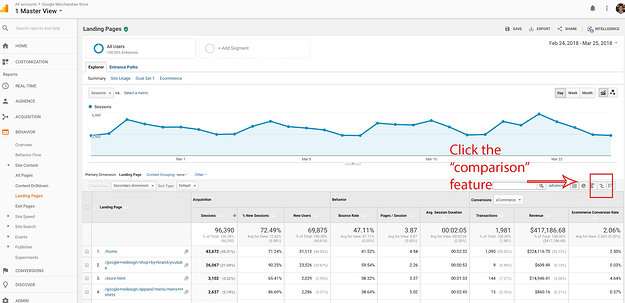
Once you’re in here, select Bounce Rate > Compared to Site Average. You should end up with something like this:

You’ll get a high-level overview of which posts are underperforming, and have a better idea of where to prioritise your CRO.
The second way to do this is to use your conversion rate. All you need to do is go through the same process as before, except that instead of selecting “Bounce Rate”, you select “Conversion Rate” before you compare it to your site average:
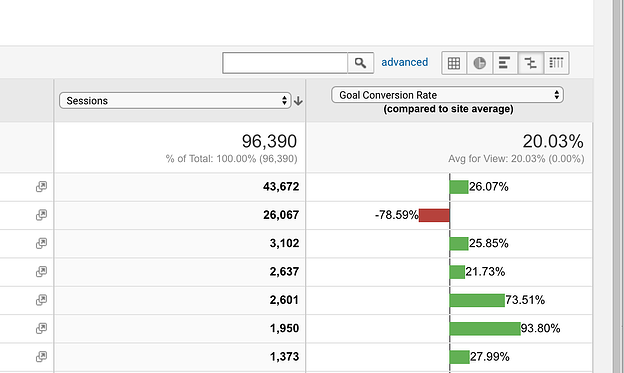
From these two metrics, you should have a fairly good idea of the blogs that should be working harder for your website.
You can also take this even further by using your lead generation pop-up or form builder tools. Most tools should allow you to dig into impression and conversion rate data, so you can see which blog posts are generating the most leads and which ones are underperforming.
9 tactics to improve your blog post conversion rate
After you’ve figured out the pages that are dragging your conversion rate down, it’s time to get to work. There are plenty of things you can do to improve your blog conversion rate but, like analysing your CRO, most tactics fall into one of two buckets. You can either improve your audience’s path to conversion or improve the actual content you’re offering to your readers.
Optimising the path to conversion is all about ensuring that your offers or CTAs are firing at the right time and that your sign-up experience is on point. Let’s say you have a first-time visitor on your blog. They’ve never heard about your brand before and right away, they’re presented with an offer to sign up for your newsletter in exchange for 10% off their first purchase.
However, when they go to fill in their details, they have to fill out 10+ form fields — leading them to quickly turn away and go elsewhere. Tweaking the different stages of your customer journey ensures that your readers are getting presented the right message at the right time, and that the path to converting is seamless from start to finish.
The other area to focus on is the content itself. A lot of content marketers write blog posts for themselves or for the sake of producing content without TRULY understanding what their target audience is after (or even who their target audience is). This can quickly lead to a disconnect between the content you’re churning out and what really matters to your audience. In this instance, you’ll either need to focus on creating more of what your audience does value OR bringing the right type of readers to your website.
So what are the best tactics for increasing your conversion rate? We’ve rounded up 9 tried-and-tested methods below.
1. Know your customer
Increasing your blog content conversions starts with knowing exactly WHO your customer is.
If you don’t know who your customer is, you’re not going to get far with your content marketing efforts. Despite this, a lot of bloggers make this mistake: they write posts for themselves, their colleagues or their friends, as opposed to writing for their actual target user.
So how do you figure out precisely who your customers are?
The easiest way to start is using Google Analytics. Navigate to the Audience section, then click on Demographics. From here, you should be able to glean some top-level insights about who your audience is, including their age, gender, location and interests:
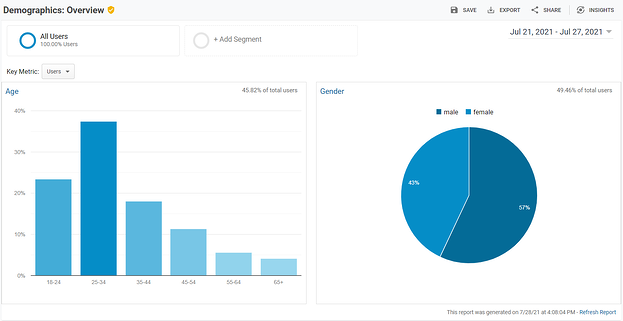
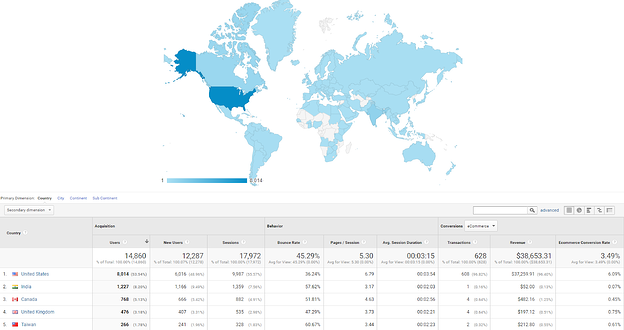
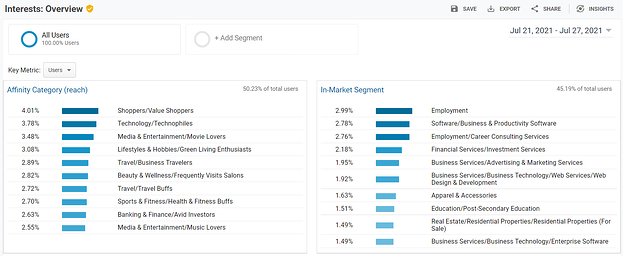
After you’ve got this information from Google Analytics, it’s time to dig deeper — and that means connecting directly with your blog visitors to find out what they’re looking for.
There are a couple of ways to go about this. You can either send a survey to your existing email database to learn about their content preferences, or take a more personalised approach and reach out to people one-on-one. Regardless of which approach you take, be sure to throw in an incentive to get as many responses as possible, such as a discount or a gift with their next purchase.
Social media is also invaluable here. If your business is on Facebook, set up a quick poll and see what topics your community would like to see featured on your blog. You might even get a few ideas in the comments that you didn’t expect:
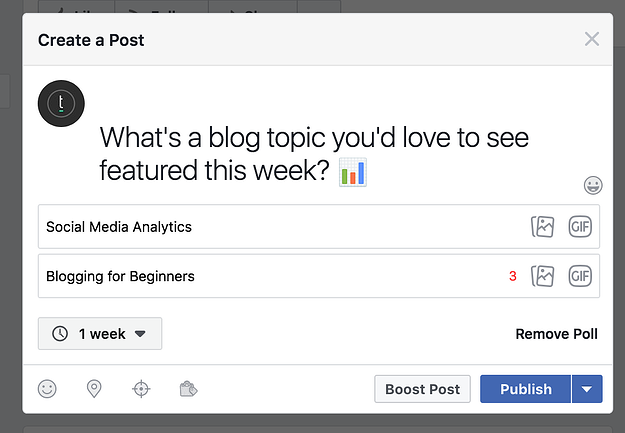
Image source: Twenty Over Ten
You can take a similar approach on Instagram using Stories. Ask your community to vote on the types of content they’d like to see next using a poll like this one:
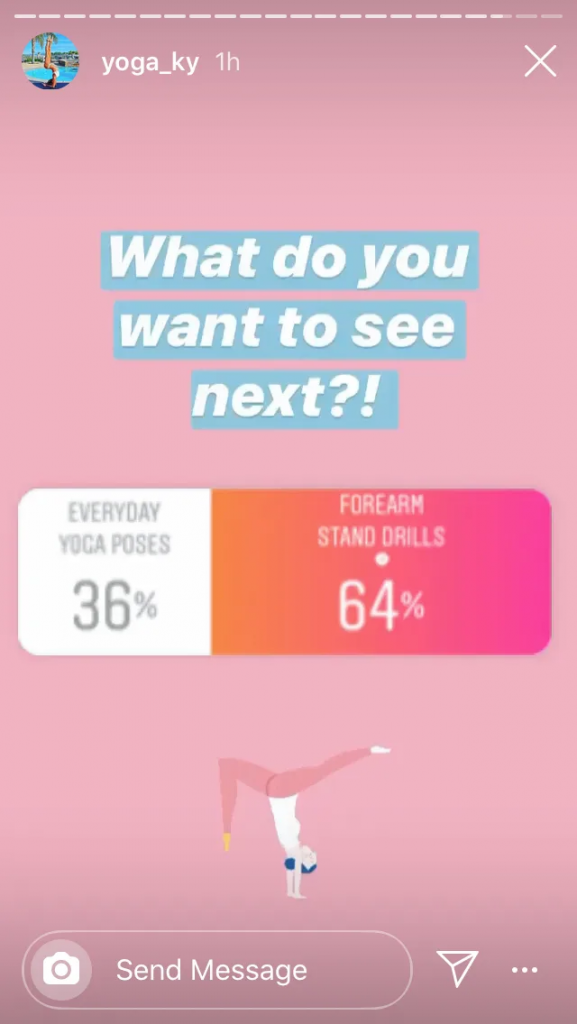
Image source: Revive Social
With this information, it’s FAR easier to create and write content that’s of value to your target user — and far easier to move them further along the path to purchase. Just be sure to actually incorporate your audience’s feedback into your planning. Otherwise, you risk losing their trust (and their interest).
2. Map your content to the buyer journey
Gotten to know your customer? Good. Now it’s time to map your content to their buyer journey.
Different audiences respond to different types of content and CTAs, depending on where they are in the funnel. A user that’s just discovered your brand for the first time isn’t as likely to make a purchase straight off the bat as an existing newsletter subscriber or a loyal customer. Because of this, you need to be crystal-clear about where your reader is in the buyer journey and use this to guide your content and CTAs.
One way to do this is to look at search intent.
Let’s say you’re running a travel agency, and you’re targeting keywords like “best Australian holiday destinations in 2021”. In this case, the user is most likely in the research phase of their journey and looking for inspiration. If you hit them with a blog post showcasing stunning destinations and invite them to make a $1 deposit, you’ll get far more people to convert than if you try to push them to make a full-price booking with you.
Take a look at your marketing funnel, and categorise your content to either Top of Funnel (TOFU), Middle of Funnel (MOFU) or Bottom of Funnel (BOFU):
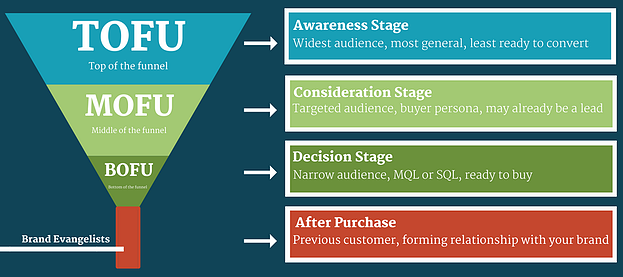
Write out the different actions you want readers to take at each step, then use this to inform your content and your call to action.
Tip: if in doubt, opt for a universal CTA to sign up for your mailing list, claim a free trial or download a lead magnet from a landing page. These appeal to a broad spectrum of blog readers, from those just learning about your business to those who are ready to convert.
3. Use sidebar CTAs
Most marketers focus mainly on the blog itself and forget all about the space around their content. They use this spot as a space for their archives or worse yet, leave it blank altogether — despite the fact that this is PRIME real estate for directing customers to learn more about your products and services or to engage with more content.
One way you can leverage your sidebar is to add in a free product offer, like what The University of St. Augustine has done:

This is a great way to encourage interested students to enquire about the latest courses on offer or learn more about the school’s learning model. They’ve also included their three latest stories as a way to encourage readers to engage more with their content if they’re not necessarily ready to convert.
4. Use tailored article CTAs
While we’re on the topic of CTAs — use them. Time and time again, blogs neglect this short but crucial sentence that links their content to the bigger picture, whether it’s contacting the company for more information or purchasing a product that’s been highlighted in the article.
Instead of popping in the same “Shop now” CTA in every blog post on your site, try to tailor the message to each individual piece of content. For example, a blog post on the top products might include a link to discover each item on a landing page, like Archie Rose does in this article about the single malt whisky:
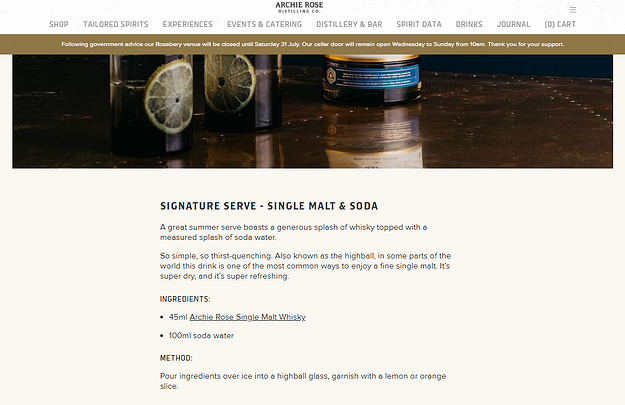
On the other hand, seasoned SEO expert Neil Patel includes an inline CTA to book in a call for any relevant blogs that talk about increasing traffic or sales:
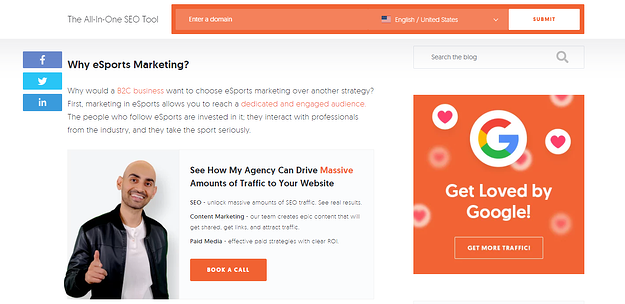
Last but not least, make sure to include a call-to-action on every blog post if you haven’t already. The act of simply adding in a CTA can inspire your visitors to take that next move and move further down the purchasing funnel.
Tip: scatter your marketing CTAs throughout your content piece if it feels natural. This might be a link to other related articles or landing pages on your site, an inline CTA to sign up for your newsletter or even a product link when relevant. Adobe does this well on their Creative Cloud blog by featuring links to discover related software platforms:

5. Address pain points
One of the best ways to lead your website visitors to take action?
Address their pain points.
Helping your readers with their challenges is a powerful way to build trust and to position your business as the go-to if they’re searching for a solution. If your post offers genuine value to your readers, they’ll be more likely to stay on the page, engage with your content, share comments, and come back to you again when they need assistance.
Don’t talk about the contents of your blog — focus on the benefits for your customer. For example, the team at Mailshake switched up their eBook headline from “The Ultimate Guide to Mastering CRO” to “12 Guidelines for A/B testing”. This shift in words? It led to a massive 3x increase in conversion rates. By tweaking the words to be specifically focused on information that helped site visitors address a pain point (effective A/B testing), Mailshake created a stronger connection between the content and their users — and skyrocketed their conversions as a result.
If in doubt, A/B test your headlines to see what resonates with your readers. You could do this by promoting the post in your email marketing with different headlines, or by testing two different variations in a pop up on your blog.
6. Introduce a targeted pop-up form
When used strategically, a pop-up form can work wonders for your conversion rate optimisation strategy. A well-timed offer for a free eBook or a discount on your latest products could capture your audience’s attention when they’re most engaged with your content — and ultimately, convert them from a reader into a customer.
Here’s the thing though: with a pop-up form, timing is everything. A pop up that appears one second after a visitor clicks on one of your landing pages could quickly get annoying and may even INCREASE bounce rates, not decrease them.
Use a marketing plugin that allows you to target specific posts or landing pages on your site, such as OptinMonster or Sumo. Once you’ve got your tool ready, experiment with a few different options depending on which stage of the buyer journey your reader is in. For example, if they’ve come across your site for the first time from Google search or your blog is more targeted towards readers at the top of the funnel, capture their email addresses with a newsletter pop-up or a landing page for a free eBook:
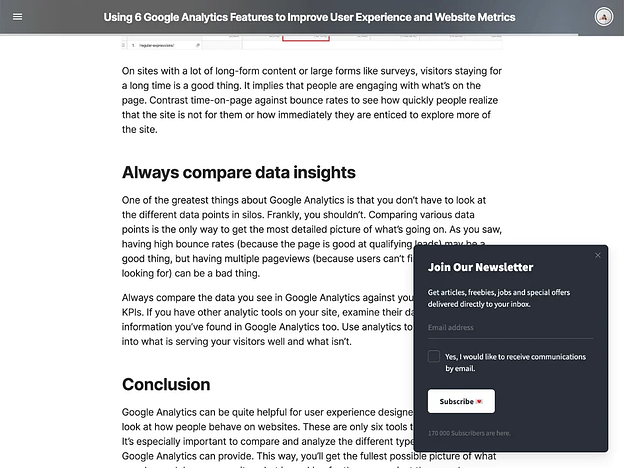
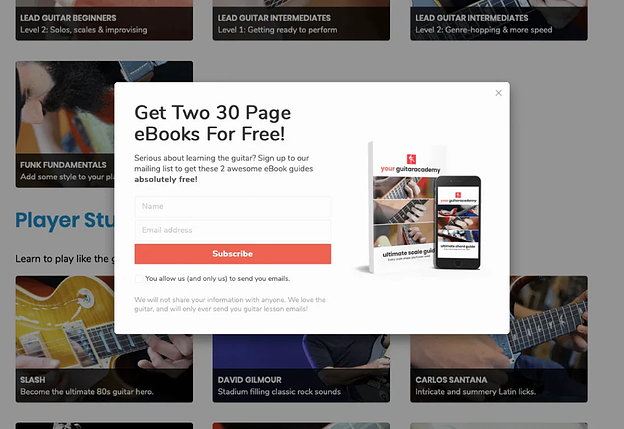
Image source: Getsitecontrol
If they’re further down the funnel or your post is specifically focused on products, give them an offer like this example:
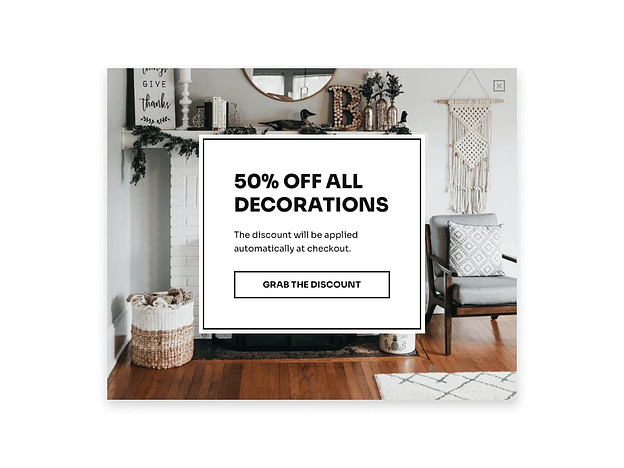
Tip: if you really want to convert your site traffic into customers, add a countdown timer to your pop-up, like what Blue Apron has done below. This will create a sense of urgency and spark a sense of FOMO in your blog readers.
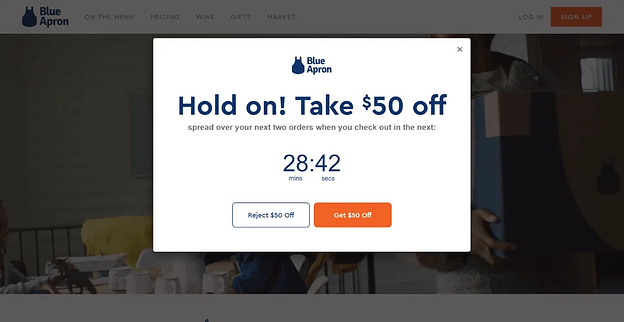
7. Create a low barrier to entry
If your blog call to action is pointing your readers to sign up for a $1,000 product with no prior experience, chances are your website traffic conversion rates are going to be pretty low. As a lot of readers may only be discovering your brand for the first time through your blog or still at the top of the funnel, it’s important to give them easy, low-cost ways to move further along their buyer journey. These actions should only take seconds and ideally offer them a benefit, rather than forcing them to buy your product or service.
Some options include:
- Signing up for your newsletter to receive the latest updates and offers
- Accessing a free trial for your product or service
- Providing their email in exchange for a free resource, such as an eBook, a guide or a template
- Inviting them to follow you on social media pages like LinkedIn, Facebook, Instagram or YouTube
- Accessing a discount or getting a value-added product
- Offering a no-obligation free consultation or demo
- Signing up for a free webinar
8. Get creative with UX and design
You don’t have to stick to the traditional pop-ups or CTAs to increase blog conversion rates. Sometimes, increasing your conversions is a matter of getting creative with how you weave your products and services into your blog and enticing visitors to engage more effectively with your content.
For example, instead of pushing readers to a specific product, include a quiz that does the recommending for you. This is a fun and personalised way to engage with potential customers while also making them feel like the recommendation was designed specifically for their needs:
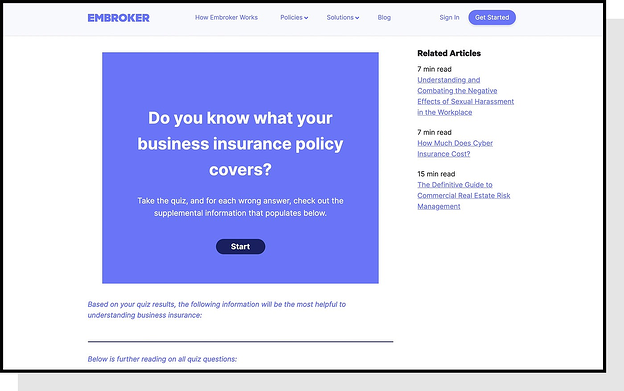
Image source: Embroker
Another option is to incorporate your product CTAs directly into inspirational images, like Pottery Barn. Once visitors hover over the “+” sign, they get more information on the product and can even add it to their cart:

Image source: Pottery Barn
The key? Get creative with it. Work with your web designers and developers to come up with new ways to incorporate your offering into your blog, then measure the results using A/B testing.
9. Measure, analyse, and repeat
Regardless of which approach you take, blog conversion rate optimisation is a science, not an art. You need to regularly review your traffic and conversions, track the change in this site traffic over time, then evaluate what worked and what didn’t. Using tools like Google Analytics, CrazyEgg and HotJar, you’ll be able to measure the impact of your content efforts and identify which parts of your blog landing page resonate with site visitors.
Finally, don’t forget to A/B test as much as possible. This is extremely useful when it comes to nutting out which language works best for your readers, or which blog headlines and CTAs are the most effective.
Ready to turn blog clicks into conversions?
Your blog can be a powerhouse for conversions IF you know where to focus your efforts. With these 9 tips, you’ll be well on your way to improving your blog’s conversion rates and winning more leads, sales and customers from your digital marketing strategy.
But creating high-converting blog posts are just one piece of the puzzle. If you want to get the most out of your content marketing strategy and bring in seriously stunning ROI, you need to understand how to captivate your readers, streamline your efforts, create impact AND prove impact.
Want to learn how to get your audience to bite on your content ‘carrot’ and turn traffic into sales? We’ll show you how with our free eBook. Grab your free copy below.









